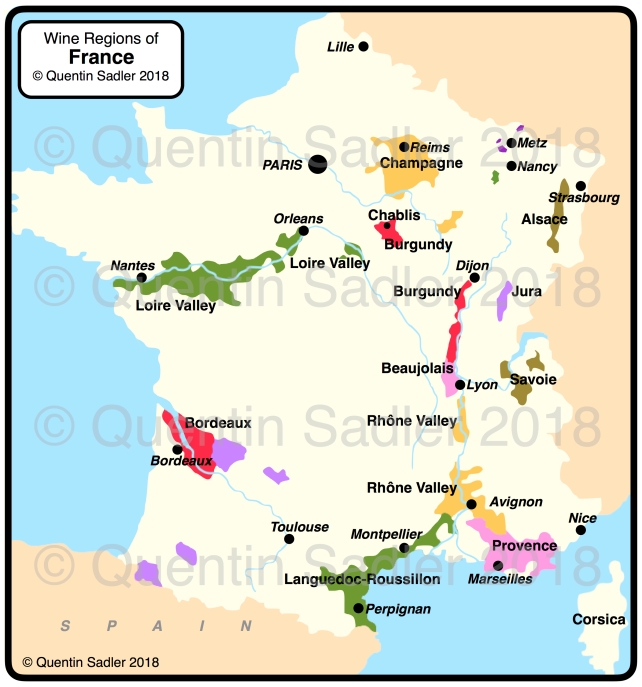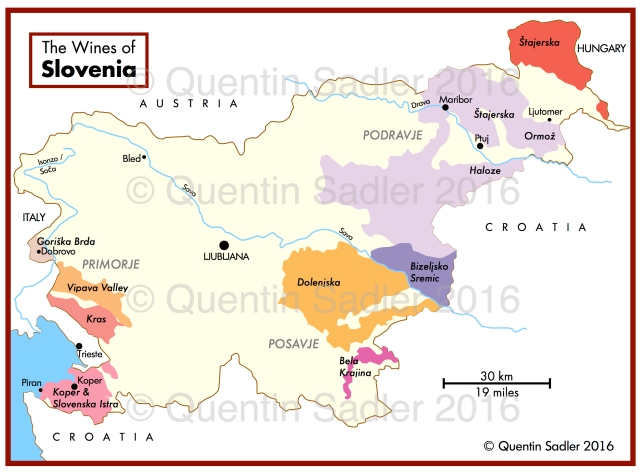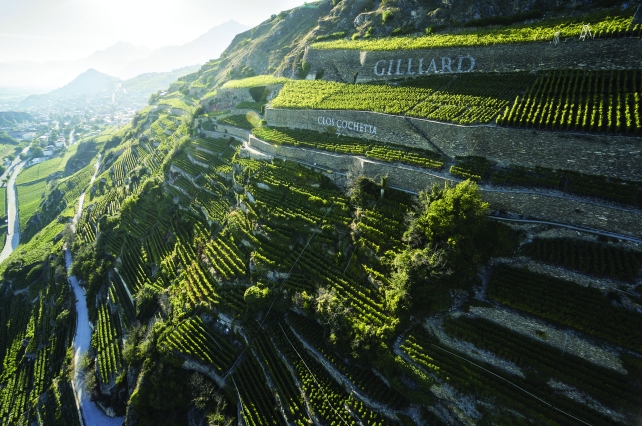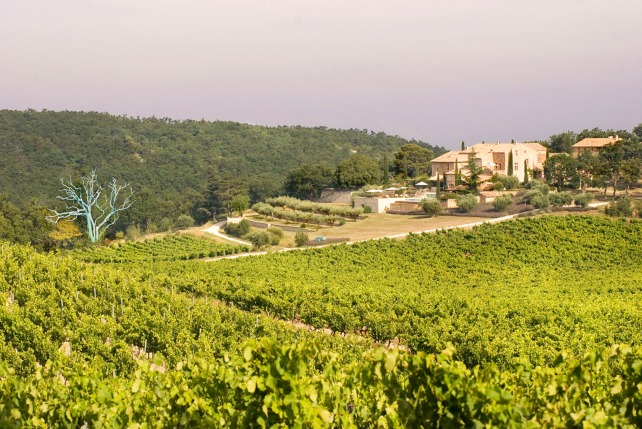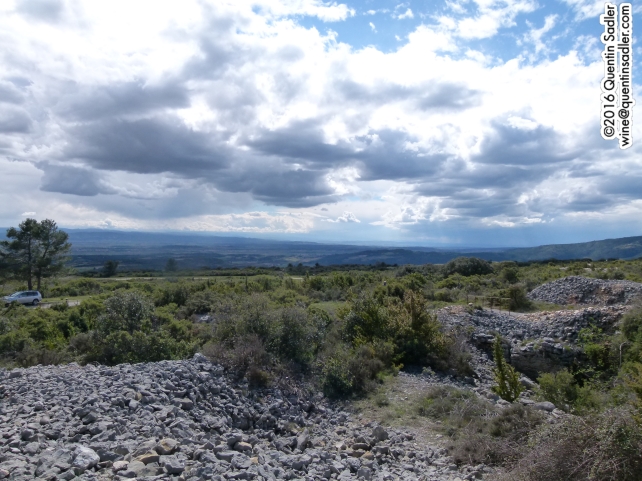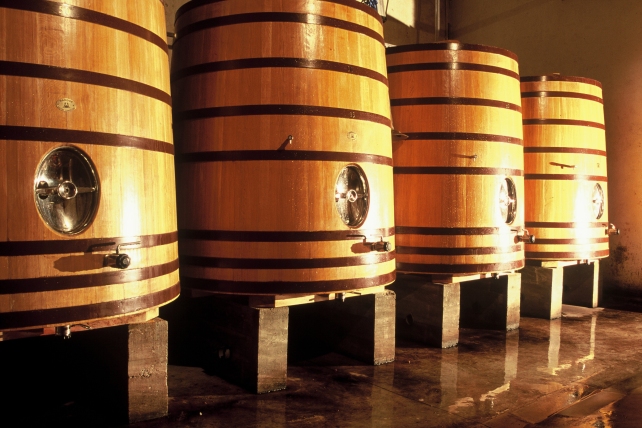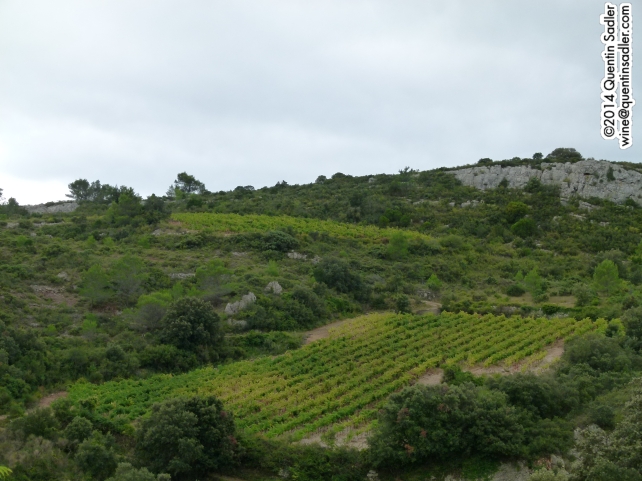2019 draws to a close and a new future for the United kingdom beckons, one that I feel no optimism for at all. We are promised ‘sunny uplands’ and a ‘new golden age’ outside of the EU. I do not believe these promises as they have no basis in logic and ignore the reasons why we joined in the first place, but desperately hope that I am wrong. It all makes me terribly sad for my country and fearful for the future.
In the meantime I will take solace in wine. In some ways 2019 has been a good year, Quentin Sadler’s Wine Page was voted Wine Blog of the Year and I managed to visit some fascinating places, meet many wonderful people and try some really good wines. There is a lot of good wine on the market, but sadly it isn’t always easy to buy the good stuff. You often have to wade through a sea of mediocrity to find it, which I suppose is my job!
Here are a few ideas for wines to enjoy over the holiday period and beyond, I hope that you like them:
Sparkling wines:
 2017 Crémant d’Alsace
2017 Crémant d’Alsace
Alsace
France
Non Champagne sparkling wine is so underrated in the UK – unless it’s Prosecco – which is very sad as there are some terrific fizzes made using the traditional method, the same process used to make Champagne sparkling. Some of them are really good value too, so they can be enjoyed everyday and not just saved for celebrations. Most wine regions in France produce good quality sparkling and call it Crémant. If you see that word on the label you know that it is made using the traditional method and, more importantly, aged on the lees, for at least 9 months, to develop complexity. We call this ageing ‘yeast autolysis’ and the biscuit, brioche, flaky pastry characters that it produces ‘autolytic’.
This wine, made by Arthur Metz (part of Grand Chais de France) is a blend of 63% Auxerrois (grown in Alsace and Luxembourg this is a similar grape to Pinot Blanc but has lower acid – they are often blended together and marketed as Pinot Blanc), 25% Pinot Gris, 8% Pinot Blanc and 4% Riesling. It is bright, fresh and fruity with some peach, apricot, apple and citrus notes and flavours as well as some almonds, spice and toasty characters. A softness, ripeness and creamy richness balances the freshness and makes it hugely enjoyable – 88/100 points.
Available in the UK at £8.29 per bottle from Aldi.
 Kleine Zalze Méthode Cap Classique Chardonnay-Pinot Noir Brut
Kleine Zalze Méthode Cap Classique Chardonnay-Pinot Noir Brut
Stellenbosch
South Africa
South Africa, specifically the Western cape, has a long tradition of making high quality sparkling wine. So much so that they have their own term for the traditional method, they call it the Méthode Cap Classique – or MCC for short. It is a blend of 60% Chardonnay grown in cool areas of Robertson and 40% Pinot Noir grown near the False Bay coast in Stellenbosch and aged for ten months on the lees.
There is a real sense of tension and elegance in this wine. There is lovely fruit, stone fruit, baked apple, crisp apple and even a little strawberry and raspberry peaking through. All this is enhanced by some biscuit and pastry notes a dollop of cream and balanced by refreshing, zingy acidity and a brisk mousse – 90/100 points.
Available in the UK at around £16.00 per bottle from Cheers Wine Merchants, Amps Wine Merchants and Ministry of Drinks.
White wines:
 2018 Tilia Estate Pinot Gris
2018 Tilia Estate Pinot Gris
Vipava Valley
Slovenia
Almost anyone who knows me would say that I really do not like Pinot Gris. I find most Pinot Grigio to be on the bland side and the great majority of Alsace Pinot Gris to be lacking in freshness, so by and large avoid the grape. This version though is made by my good friend Matjaž Lemut in the beautiful Vipava Valley in western Slovenia and I love it.
Matjaž is a great winemaker, a great character and a real force of nature and this wine could be considered his calling card. Lees ageing and stirring for four months gives the wine a creamy richness and complexity that can be surprising. The wine has lovely brightness and freshness too and so the overall effect is to be really well balanced and very, very drinkable indeed – 91/100 points.
A delicious, mid weight, versatile wine that is lovely on its own and very good with a wide array of food, even creamy dishes.
Available in the UK at £10.50 per bottle from Solaris Wines.
Matjaž is really a Pinot Noir specialist, one of the very best in Slovenia, and Solaris Wines carry the whole range. They are quite a muscular style with rich fruit, but really good wines.
 2018 La Penombre Blanc
2018 La Penombre Blanc
IGP/Vin de Pays d’Oc
France
I love the whites from the Languedoc-Roussillon-Roussillon region, but they often get overlooked in favour of the reds. Good as the reds from here are, I think the whites deserve far more attention and respect – after all they are often made from some very exciting grape varieties. This blend is no exception and consists of 40% Grenache Blanc with some Terret, Bourett, Vermintino, Rousanne and Marsanne. It is picked in the early evening, hence the name La Penombre, which means twilight, and is unoaked.
The wine is very fresh, with a sense of purity about it – it is actually made in Pinet, just not from Picpoul – there are pine, herb and lemon scents with a dry, savoury, herbal (rosemary) salty and gently apricot flavours on the palate together with a silky texture and a touch of salinity and minerality as well as a slight bitter nutty quality on the finish – 90/100 points.
A perfect aperitif and equally good with seafood and lighter fish dishes – I enjoyed it with smoked salmon and potted .
Available in the UK at £11.99 per bottle from Virgin Wines.
 2012 Petite Arvine
2012 Petite Arvine
Domaine Jean Rene Germanier
Valais, Switzerland
A family estate since 1896 and now managed by the third and fourth generation – Jean-René Germanier and his nephew, Gilles Besse. Gilles was originally a jazz saxophonist, but is also a trained wine maker. Germanier farm sustainably and produce a range of beautifully made, elegant wines. Petite Arvine is one of my favourite white grapes and it is only grown in south west Switzerland and a little bit over the border in Italy’s Valle d’Aosta region.
I love the way the brightness and richness mingle on the palate. The way the stone fruit and the citrus fruit balance each other, how the salty minerality keeps the richness in check and the way the silky texture flows across the palate. This wine is superb and totally beguiling in its beauty – 94/100 points.
This is wonderful with poultry, salmon and of course cheese, whether raw or served in a fondue.
Available in the UK at £35.00 per bottle from Alpine Wines.
Red wines:

The wonderful walled city of Carcassonne – rescued form oblivion and restored on orders of Napoleon III – photo by Quentin Sadler © Quentin Sadler 2019.
 2018 Carcassonne
2018 Carcassonne
IGP/Vin de Pays Cité de Carcassonne
France
I know almost nothing about this wine except that it comes from France’s Languedoc-Roussillon region from vineyards just to the south of the glorious medieval walled city of Carcassonne. The wines from this inland part of the Languedoc-Roussillon often get overlooked, Cabardés is near by and is a source of seriously good reds but we hardly ever see the wines in the UK – there is one here, but on this showing they really shouldn’t be. Apparently it is made from Carignan grapes and seems unoaked to me.
This wine triumphs in two way, firstly it is astonishingly smooth, suave even and the palate is so fruity that it delivers a huge amount of pleasure making it incredibly easy to drink. It’s fresh and fleshy and medium-bodies with lots of red fruit and supple texture with very little tannin. There’s a touch of spice too and it is far, far finer than its modest price tag would lead you to expect. All in all it makes a splendid every day wine – 87/100 points.
Available in the UK at £4.49 per bottle from Aldi.
Here’s one that I have written about before, but is is such a beautiful wine that would go so well with all sorts of food at Christmas that it deserves another airing!
 2017 Casa Silva Romano Viñedo Original
2017 Casa Silva Romano Viñedo Original
DO Valle de Colchagua
Viña Casa Silva
Chile
Casa Silva is one of the great wine estates of the Colchagua Valley. They were originally a French family of grape growers who came to Chile in 1892 and have been growing grapes there ever since. However the family vineyards became divided up with multiple owners and it was not until the 1970s that Mario Silva pieced the estate together again and they have been bottling and labelling their own wines since 1997. They are based in Angostura where their beautiful original homestead is now a hotel and well worth a visit. The land around the house is their initial plantings with vineyards going back to 1912. This is where they have some fabulous speciality grapes including old vine Carmenère, Sauvignon Gris and this Romano. All of these are ungrafted, so grow on their own roots. This helps the vines to live longer and old vines produce smaller crops and smaller berries that have more concentrated flavours. Old vines also ripen with less sugar, so produce wines with lower alcohol, which makes for better balance and more elegance.
This is made from an obscure grape called Romano, more usually called César. There isn’t much César left in the world and most of that grows northwest of Dijon in Burgundy, where it is principally used to make up to 10% of the blend, together with Pinot Noir, in the wines of Irancy.
The harvest was done by hand with a further manual selection of grapes at the sorting table before the grapes were de-stemmed – stalks can give harsh tannins. There is a pre-fermentation cold soak, a cold fermentation in stainless steel followed by a further maceration on the skins. Half the wine was aged in stainless steel and half in second use French oak barrels. This older oak means that the wine is not overly oaky in taste, but has the softening that ageing in barrels gives as the oxygen gets to the wine through the wood, making it rounder and richer.
The wine looks very appealing with a deep and bright ruby colour. The nose is full of rich red fruits like strawberry, cherry, a hint of raspberry, black pepper and a delicate mushroomy/earthy savoury note. The palate is smooth, round and mouth filling with rich ripe red fruit, smooth, supple tannins and some lovely freshness too. There is plenty of beautiful, concentrated fruit, but good structure and that attractive earthy, savoury quality. This will appeal to Pinot Noir drinkers – and Syrah and Grenache drinkers too – in my opinion, as well as anyone who wants a really flavourful, suave and supple red wine that is full-flavoured and medium bodied. It really is a gorgeous wine – 93/100 points
This is a very versatile wine too. It is mellow enough to be enjoyable without food, has enough freshness to go with pizzas and pastas, has enough elegance and structure to partner haute cuisine and enough richness to go with cheese and enough pizzazz to go with burgers, chilli con carne or shepherd’s pie and to keep everyone happy. Great with turkey, either hot or cold, and lovely with a pork or game pie too.
Available in the UK at around £15.00 per bottle from Duncan Murray Fine Wines – Market Harborough, Staintons – Lake District, Guildford Wine Co, Bottle Shops – Cardiff, Penarth, Field & Fawcett – York, Naked Grape – Alresford, Hants, Palmers Wine Store – Dorset, The Vineking – Reigate, East Molesey, Weybridge and the Oxford Wine Company.
 2016 Caliterra Edición Limitada ‘B’
2016 Caliterra Edición Limitada ‘B’
DO Valle de Colchagua
Caliterra
Chile
Under the leadership of chief winemaker Rodrigo Zamorano, Caliterra has developed into one of the most exciting wineries in Colchagua – if not Chile. They produce excellent, actually downright delicious, and great value examples of all the famous varietals, but Rodrigo loves to play around with the grapes that he grows and is producing an ever evolving range of premium wines that have something new and exciting to say. At the heart of this range is the three Edición Limitada wines – ‘A’ is for Andean and is a blend of Malbec and Carmenère, ‘M’ is for Mediterranean and the wine is a blend of Syrah, Carignan, Grenache and Marsanne, while ‘B’ is for Bordeaux, so this wine is a blend of 41% Petit Verdot, 38% Cabernet Franc and 21% Cabernet Sauvignon. 62% was fermented in stainless steel tanks and 38% in third use barrels. The wine was aged for 18 months in French and American oak barrels – 48% new.
This is a beautiful and very different wine from the Casa Silva Romano. This is powerful and weighty with great concentration of vibrant, lifted fruit. It’s very aromatic and very restrained and elegant, despite the richness. There are herbal and tobacco aromas as well as some black pepper and cassis, blueberry and cherry fruit. Headily delicious now this will age very well over the next decade. This will appeal to Claret lovers, but also has more fruit than most wines from Bordeaux – 92/100 points.
Available in the UK at around £16.00 per bottle from Drink Finder, Edencroft Fine Wines and The Dorset Wine Company.
So there you are, a few recommendations to seek out and try, I think you will enjoy them.
Whatever you are drinking this Christmas, try and keep it interesting and celebrate the great diversity of wine.
A Merry Christmas and a Happy New Year to you all.


